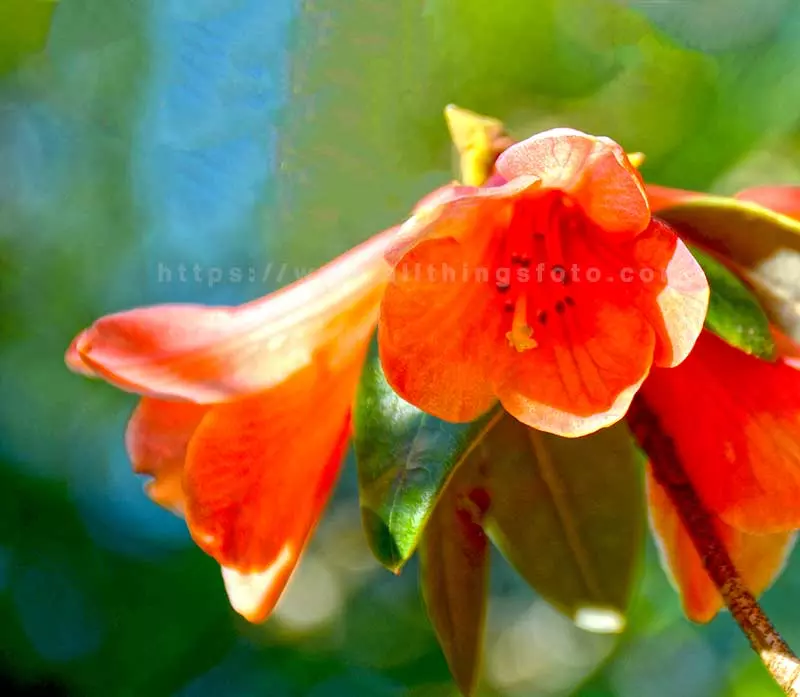- Harmonizing Visual Elements: The Impact of the Rule of Odds in Photographic Composition
- Understanding the Rule of Odds in Photography
- Applying the Rule of Odds in Photography: Enhancing Visual Appeal Across Genres
- Experimenting with the Rule of Odds: Enhancing Your Photographic Craft
- Expert Techniques and Modifications: Elevating the Rule of Odds in Photography
- The Art of Threes: Using the Rule on Your Smartphone
- Summarizing The Rule Of Odds
- Frequently Asked Questions
- Is the Rule of Odds applicable only to professional photography?
- Does the Rule of Odds always make a photo better?
- How does the Rule of Odds impact viewer perception?
- What are some common mistakes when using the Rule of Odds?
- How do I start practicing the Rule of Odds?
- Can the Rule of Odds be combined with other photography rules?
- Is the Rule of Odds just about the number of subjects in a photo?
Harmonizing Visual Elements: The Impact of the Rule of Odds in Photographic Composition
Composition shapes a photo’s story and emotion by arranging its elements. A photographer’s composition can significantly change how viewers perceive and interact with a photo. Among various compositional techniques, the Rule of Odds stands out for its unique ability to create harmony and visual interest.
The Rule of Odds suggests that images are more visually appealing when they feature an odd number of subjects, typically three or five. This principle is rooted in the idea that odd-numbered groupings are more natural and less forced than even-numbered arrangements.
The asymmetry and imbalance offered by odd numbers draw the viewer’s eye into the composition, making the photograph more engaging and dynamic.
Applying the Rule of Odds can have significant benefits in photographic composition. It’s a simple but powerful method for photographers to enhance their images’ appeal and impact.
Odd numbers in a photo create intrigue and depth, enticing viewers to explore more. Skillful use of the Rule of Odds can elevate a photographer’s work, helping it stand out visually.

Understanding the Rule of Odds in Photography
The Rule of Odds is a compositional guideline in photography that suggests an image is more visually appealing when it contains an odd number of elements, typically three or five.
This rule is rooted in the belief that odd-numbered groupings create more interest and visual balance compared to even-numbered arrangements.
Unlike even numbers, which can split a frame into symmetrical and sometimes monotonous sections, odd numbers introduce a sense of natural asymmetry, compelling the viewer’s eye to move around the frame and engage with the photograph more deeply.
The basic principle behind the Rule of Odds is that it creates a central focal point, with the odd element often serving as the main subject.
This central element provides an anchor for the image, while the additional elements on either side add context and support, enhancing the overall composition.
For example, in a photograph featuring three birds, the bird in the middle often becomes the focal point, while the birds on either side contribute to the balance and harmony of the image.

Using An Odd Number Creates Balance And Intrigue
Odd numbers in photography create balance and visual interest in a unique way. The human eye naturally seeks out balance, and the use of odd numbers subconsciously satisfies this need.
Odd-numbered elements in a frame can produce a sense of harmony, as the viewer’s eye is encouraged to move between them, creating a more dynamic interaction with the photograph.
Furthermore, odd numbers prevent the eye from pairing elements, which often happens with even numbers, making the composition more engaging and less predictable.
Photographs that effectively use the Rule of Odds often include nature shots, still life, and portraiture. For instance, a landscape photograph with three prominent trees spaced apart can draw the viewer’s attention across the entire scene, making the image more captivating.
In portraiture, a group of three people arranged in a triangular composition can create a more intriguing and dynamic image than a group of two or four.
Similarly, a still life photograph with an arrangement of five different fruits can be more visually stimulating than a symmetrical arrangement of four.
In summary, the Rule of Odds is a powerful compositional tool in photography that leverages the natural appeal of asymmetry and balance created by odd numbers.
By thoughtfully applying this rule, photographers can enhance the visual interest and engagement of their images, crafting photographs that are both aesthetically pleasing and emotionally resonant.

Applying the Rule of Odds in Photography: Enhancing Visual Appeal Across Genres
The Rule of Odds, a compositional guideline in photography, states that images containing an odd number of elements are more appealing and harmonious.
This rule is not genre-specific; it can be effectively applied in various photography types, including portraits, landscapes, and still life. Here are some practical tips for applying the Rule of Odds in different photography genres:
Portraits
In portrait photography, the Rule of Odds can create a compelling composition, especially in group photos. For instance, arranging a group of three or five people can create a natural focal point.
In a group of three, the person positioned slightly off-center often becomes the main focus, with the others providing balance. This arrangement is more dynamic and visually interesting than evenly numbered groups, which can appear too symmetrical or split the frame in half.

Landscapes
Landscape photographers can use the Rule of Odds by incorporating an odd number of prominent elements, like trees, rocks, or mountains. For instance, a photograph with three distinct trees spaced across the frame can guide the viewer’s eye through the image, creating a sense of depth and balance.
This approach is more engaging than a landscape with an even number of elements, which might divide the viewer’s attention or create a static feel.
Still Life
The Rule of Odds ensures still life photographs are pleasing to the eye and hold the viewer’s gaze. A scene with three or five elements makes it seem more naturally arranged, unlike two or four.
The odd number of elements can be arranged in a way that guides the viewer’s eye through the photograph, creating a more dynamic and engaging image.
The Rule of Odds also plays a crucial role in creating focal points and leading the viewer’s eye. Odd numbers naturally draw attention, with the central element often becoming the main focus.
This creates a visual journey for the viewer, as their eye is led from one element to the next, exploring the entire photograph. The asymmetry provided by odd numbers prevents the eye from becoming stagnant, maintaining interest and engagement.
To illustrate the impact of the Rule of Odds, consider before-and-after photographs. In a before scenario, a landscape with two equally spaced trees might appear static and unengaging.
After applying the Rule of Odds, adding a third tree creates a central focal point and a more balanced composition, instantly making the image more captivating.
In summary, the Rule of Odds is a versatile compositional technique that can enhance the visual appeal of photographs across various genres.
By thoughtfully applying odd numbers to create focal points and guide the viewer’s eye, photographers can transform their images from ordinary to extraordinary, making them more engaging and aesthetically pleasing.

Experimenting with the Rule of Odds: Enhancing Your Photographic Craft
As a photographer, experimenting with the Rule of Odds can open up new avenues for creative expression and compositional strength.
This principle, stating that images with an odd number of elements are more appealing, is not just a rule but a doorway to exploring the dynamics of visual balance and interest.
Try incorporating the Rule of Odds in various scenarios and settings. Whether you’re capturing the quiet symmetry of nature, the bustling energy of urban landscapes, or the intimate moments of portraiture, apply this rule. Start by identifying three elements in your frame.
Examples include three pedestrians in an urban landscape, a triplet of garden flowers, or three design elements in a city panorama. Watch how these elements play off each other, shaping the composition’s overall harmony.
What’s beautiful about the Rule of Odds is how flexible it is. Experiment with different compositions and perspectives. For instance, instead of a straight-on shot, try capturing your three elements from a low angle or a high vantage point.
See how changing your perspective alters the visual dynamics of the photograph. Remember, the central element doesn’t always have to be in the middle; play with off-center compositions to create more dynamic images.
Most importantly, practice and exploration are crucial in mastering any compositional technique, including the Rule of Odds. Each photograph you take is an opportunity to learn and grow as a photographer.
Don’t be afraid to break the rule sometimes and see what happens.
Photography is as much about following guidelines as it is about defying them creatively.
By continuously experimenting and reflecting on your work, you’ll develop a more intuitive understanding of composition and how the Rule of Odds can be used to enhance your photographic storytelling.

Expert Techniques and Modifications: Elevating the Rule of Odds in Photography
The Rule of Odds, a foundational composition technique in photography, posits that images containing an odd number of elements are more visually appealing.
However, for photographers looking to further refine their craft, combining this rule with advanced compositional techniques can lead to even more striking and compelling images.
Complementing the Rule with Advanced Techniques:
Leading Lines
This technique involves using natural lines within the scene, like roads, fences, or shadows, to lead the viewer’s eye towards the main subject.
When combined with the Rule of Odds, leading lines can guide the viewer to the central element of an odd-numbered grouping, enhancing the photograph’s focus and depth.

Framing
Using elements in the foreground to frame the main subject can add depth and context to a photograph. When applied alongside the Rule of Odds, framing can accentuate the central subject, making the odd-numbered composition more pronounced and engaging.
Layering
Layering involves placing elements at various depths in the frame. In combination with the Rule of Odds, layering can create a three-dimensional effect, making the photograph more dynamic and visually complex.

Different Takes on the Rule of Odds:
Multiple Points Of Attention
While traditionally the Rule of Odds emphasizes a single focal point, photographers can experiment with multiple focal points within an odd-numbered grouping. This approach can add complexity to the composition and encourage viewers to explore different parts of the image.
Overlapping Subjects
Overlapping elements in an odd-numbered composition can create a sense of unity and depth. This variation challenges the viewer to distinguish between the subjects, adding an element of intrigue to the photograph.

Enhancing the Rule of Odds: Advanced Post-Processing Techniques
Advanced post-processing techniques significantly enhance the impact of the Rule of Odds in photography. This allows photographers to further refine and emphasize the compositional elements that make this rule so effective.
When a photograph is composed using the rule, post-processing is used to draw attention to the odd number of elements in the frame. One effective method is selective sharpening.
By slightly sharpening the main subjects – the odd-numbered elements – and softly blurring the background, you enhance the focal points and make them stand out.
This technique not only accentuates the subjects but also adds depth to the image.
Additionally, the use of color grading is incredibly effective. Adjusting the color balance and tones creates a mood that complements the composition. For instance, in a serene landscape with three trees, cooler tones enhance the tranquility, while warmer tones might be used in a vibrant street scene featuring three main subjects.
Dodging and burning, an age-old darkroom technique now digitized, allows photographers to manage the light and shadow in the image, guiding the viewer’s eye towards the key elements.
By subtly lightening (dodging) the odd-numbered subjects and darkening (burning) surrounding areas, you create a natural path for the eye, reinforcing the composition’s balance.
Furthermore, cropping in post-processing can be crucial. Sometimes, the original capture might not perfectly align with the Rule of Odds.
Cropping helps in re-framing the image to ensure that the odd-numbered elements are positioned effectively, thereby enhancing the overall visual appeal.
These advanced post-processing techniques, when used thoughtfully, significantly elevate the effectiveness of the Rule of Odds, transforming a good photograph into an extraordinary one.
They allow photographers to fine-tune their compositions, ensuring that every element within the frame contributes to a cohesive and compelling narrative.

Real-World Examples and Analyses:
Renowned photographers often subtly incorporate the Rule of Odds into their work, blending it with other compositional techniques.
For instance, Ansel Adams, known for his breathtaking landscapes, often used the Rule of Odds in tandem with leading lines and framing.
In one of his famous photographs, three prominent rock formations are framed by the overhanging branches of trees, with a road leading the eye towards these elements.
Another example is Henri Cartier-Bresson, a master of street photography, who frequently combined the Rule of Odds with layering. His photographs often feature three main subjects, positioned at different depths within the frame, creating a multi-layered narrative.
In summary, while the Rule of Odds is a powerful tool in a photographer’s arsenal, its true potential is unlocked when combined with other advanced techniques.
Leading lines, framing, layering, and variations like multiple focal points and overlapping subjects, all contribute to creating more nuanced, interesting, and profound photographic compositions. Don’t forget about the rule of thirds when shooting wildlife or flowers with the rule of odds.
By studying and applying these combinations, photographers can elevate their work from simple compositions to intricate visual stories.
The Art of Threes: Using the Rule on Your Smartphone
Using the Rule with a smartphone is straightforward and can greatly enhance your mobile photography.
First, identify three key elements in your scene. This could be three people, plants, buildings, or any objects of interest.
Use your smartphone’s grid feature to help position these elements in a balanced way within the frame.
Many smartphones have advanced camera settings that allow you to activate a grid overlay, aiding in composition.
Aim to place the main subject off-center, ideally at one of the intersecting points of the grid, to create a more dynamic image.
Remember, the quality of smartphone cameras today makes them a powerful tool for applying classic photography rules like the Rule of Odds, enabling you to capture stunning, well-composed shots with ease.

Summarizing The Rule Of Odds
The Rule of Odds is a vital compositional technique in photography that enhances visual appeal and emotional engagement in images. By focusing on odd-numbered elements, photographers can create more balanced, harmonious, and intriguing compositions.
This rule not only simplifies the creative process but also encourages a deeper exploration of the scene, leading to more compelling and aesthetically pleasing photographs.
Photographers, both novice and experienced, are encouraged to integrate the Rule of Odds into their practice.
Experimentation is key – try applying this rule in different settings and with various subjects to see how it transforms your images.
Remember, rules in photography are not rigid constraints but tools for creative expression.
For those eager to delve deeper, numerous resources are available. Photography books, online tutorials, and workshops often cover the Rule of Odds, along with other compositional techniques.
Analyzing the work of renowned photographers who employ this rule can also provide valuable insights. Embrace the Rule of Odds as a guiding principle in your photographic journey, and watch how it elevates the visual storytelling in your images.
